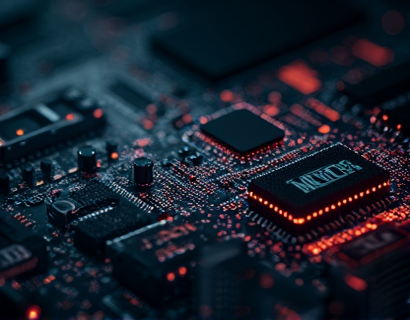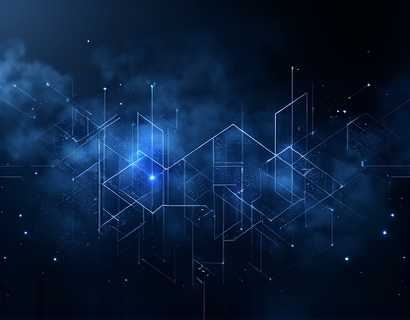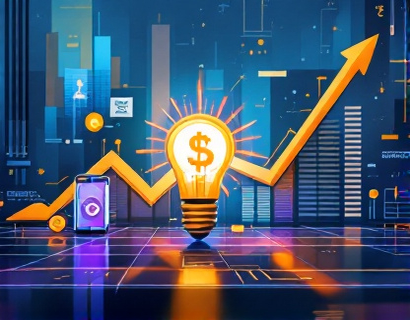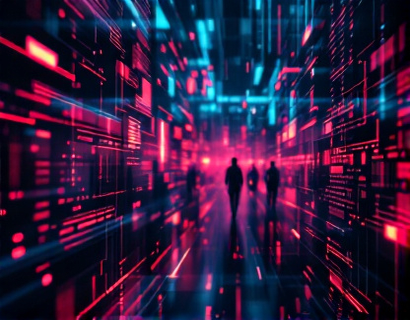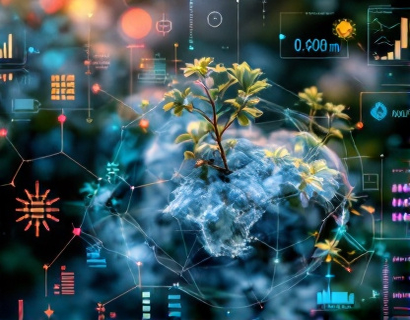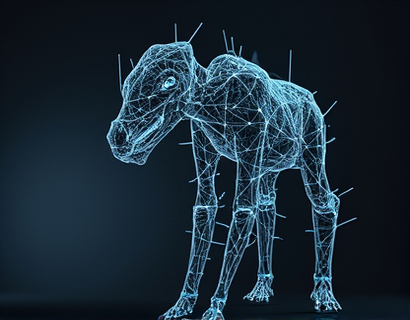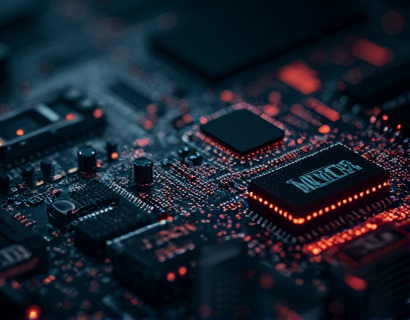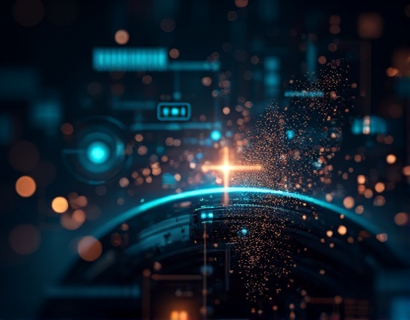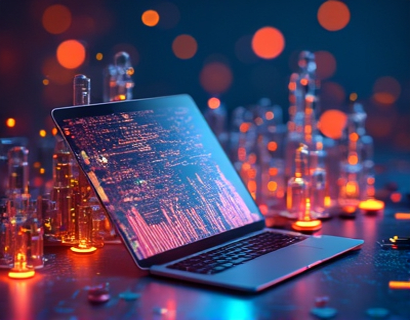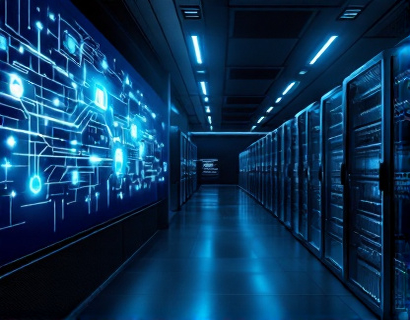Unlocking Next-Gen Productivity: The Synergy of Crypto and AI
The intersection of cryptocurrency and artificial intelligence (AI) is giving rise to a new era of productivity tools tailored for tech enthusiasts and early adopters. This article delves into how the fusion of these two cutting-edge technologies is creating innovative solutions that simplify and enhance daily tasks. By exploring the capabilities and potential of crypto and AI, we aim to provide a comprehensive understanding of the next-generation productivity ecosystem.
Understanding Crypto and AI
To appreciate the synergy between cryptocurrency and AI, it's essential to first understand each technology individually. Cryptocurrency, often referred to as digital or virtual currency, uses cryptography for security and operates on a decentralized network, typically a blockchain. This decentralized nature ensures transparency, security, and reduces the need for intermediaries.
Artificial intelligence, on the other hand, involves the simulation of human intelligence processes by machines, particularly computer systems. These processes include learning (the acquisition of information and rules for using it), reasoning (using rules to reach approximate or definite conclusions), and self-correction. AI can operate autonomously or be integrated into existing systems to enhance their functionality.
The combination of these technologies opens up a realm of possibilities, especially in the realm of productivity tools. By leveraging the security, transparency, and decentralization of crypto, along with the computational power and learning capabilities of AI, developers can create applications that are not only efficient but also highly secure and user-friendly.
Decentralized Productivity Platforms
One of the most promising applications of crypto and AI is in the development of decentralized productivity platforms. These platforms utilize blockchain technology to create a trustless environment where users can collaborate and share resources without the need for central authorities. AI algorithms can optimize these interactions, ensuring smooth and efficient collaboration.
For instance, a decentralized project management tool could use AI to predict project timelines, allocate tasks based on team members' availability and skills, and even automate payment transactions using smart contracts. The use of blockchain ensures that all transactions and data are immutable and transparent, reducing the risk of fraud and errors.
Enhanced Security and Privacy
Security and privacy are paramount in the digital age, and the integration of crypto and AI addresses these concerns effectively. Cryptocurrencies provide a secure means of transaction, while AI can enhance security through advanced threat detection and prevention systems. AI algorithms can analyze patterns and detect anomalies in real-time, helping to safeguard user data and transactions.
Moreover, the decentralized nature of blockchain means that user data is not stored in a single, vulnerable location. Instead, it is distributed across a network of nodes, making it much harder for hackers to compromise. This combination of technologies ensures that sensitive information remains protected, giving users peace of mind as they use productivity tools.
Smart Contracts for Automated Task Management
Smart contracts, self-executing contracts with the terms directly written into code, are another innovative feature enabled by blockchain technology. In the context of productivity, smart contracts can automate various tasks, reducing the need for manual intervention and increasing efficiency.
For example, a smart contract can be programmed to release payment to a freelancer once a project milestone is achieved and verified by AI-driven quality checks. This not only speeds up the payment process but also ensures that payments are made only when the agreed-upon conditions are met. Such automation can significantly streamline workflows and reduce administrative overhead.
AI-Driven Personalization and Productivity Insights
AI's ability to analyze vast amounts of data and derive meaningful insights can be harnessed to create highly personalized productivity tools. By understanding user behavior and preferences, AI can tailor recommendations and workflows to individual needs, enhancing overall productivity.
For instance, an AI-powered task management app could analyze a user's past performance and suggest optimal times for task execution based on their productivity patterns. It could also identify bottlenecks and propose solutions, such as delegating tasks or adjusting deadlines. This level of personalization ensures that users can work more efficiently and effectively.
Decentralized Storage and Collaboration
Another area where crypto and AI converge is in decentralized storage and collaboration solutions. Traditional cloud storage services rely on centralized servers, which can be points of failure and potential security risks. Decentralized storage solutions, powered by blockchain, distribute data across a network of nodes, ensuring high availability and resilience.
AI can further enhance these solutions by optimizing data storage and retrieval processes. For example, AI algorithms can predict which data is most frequently accessed and prioritize its storage on faster, more reliable nodes. This not only improves performance but also reduces costs associated with data storage and transfer.
In terms of collaboration, decentralized platforms can facilitate seamless sharing and editing of documents without the need for centralized servers. AI can enhance this by providing real-time translation, summarization, and insight generation, making collaboration across languages and cultures more effective.
Tokenization of Skills and Resources
The tokenization of skills and resources is another innovative concept emerging from the crypto and AI synergy. By representing skills and resources as tokens on a blockchain, individuals can trade and monetize their expertise in a more flexible and transparent manner.
AI can play a crucial role in matching skill tokens with relevant projects or users, ensuring that the right expertise is applied to the right task. This token-based system can also facilitate micro-payments, allowing users to compensate contributors for their work in small, precise amounts. This not only incentivizes contribution but also makes it easier for micro-talents to earn recognition and compensation.
Challenges and Considerations
While the potential of crypto and AI in productivity tools is vast, there are several challenges and considerations to keep in mind. One of the primary challenges is the regulatory landscape. The decentralized and often anonymous nature of cryptocurrencies can raise concerns among regulators, leading to varying degrees of acceptance and enforcement across different regions.
Another challenge is the technical complexity involved in integrating these technologies. Developers need to have a solid understanding of both blockchain and AI to create robust and efficient solutions. Additionally, user adoption depends on the ease of use and accessibility of these tools, which requires intuitive design and user-friendly interfaces.
Privacy concerns also remain a significant issue. While blockchain offers enhanced security, the transparency of the ledger can sometimes conflict with user privacy. Implementing privacy-preserving techniques, such as zero-knowledge proofs, can help mitigate these concerns.
Future Prospects
Looking ahead, the integration of crypto and AI in productivity tools is poised for significant growth. As more developers and businesses recognize the potential of these technologies, we can expect to see more innovative applications and solutions.
One area of future development is the integration of machine learning with blockchain to create self-improving systems. These systems can learn from user interactions and data patterns to continuously optimize performance and user experience. Additionally, the rise of Web3 and decentralized applications (dApps) will further drive the adoption of crypto and AI in productivity tools.
Another exciting prospect is the development of cross-platform ecosystems that seamlessly integrate various crypto and AI-powered tools. These ecosystems will allow users to switch between different applications and services without the hassle of managing multiple accounts and credentials, creating a more cohesive and efficient digital workspace.
Conclusion
The convergence of cryptocurrency and artificial intelligence is revolutionizing the way we approach productivity. By leveraging the strengths of both technologies, developers are creating innovative solutions that simplify and enhance daily tasks for tech enthusiasts and early adopters. While there are challenges to overcome, the potential benefits are immense, promising a future where productivity is not only more efficient but also more secure and personalized.
As the field continues to evolve, staying informed and adaptable will be key for anyone looking to harness the power of crypto and AI in their productivity toolkit. Embrace the change, and be part of the next generation of digital productivity.






